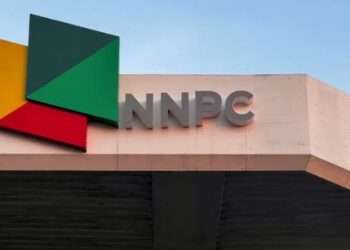Ghana’s banking sector has continued to grapple with significant levels of credit risk, although recent data shows some improvement in asset quality.
According to the latest Domestic Money Bank Report released by the Bank of Ghana, commercial banks wrote off a total of GH¢654.2 million as bad debt during the first four months of 2025. This figure, while substantial, represents a notable decline from previous years. For context, banks wrote off GH¢863.4 million over the same period in 2024, and an even higher GH¢1.087 billion in 2022.
The write-offs primarily covered loan losses, depreciation, and other related provisions. This reduction in bad debts signals that while credit risk remains high, banks are making progress in tightening their credit management practices and improving loan recovery efforts.
Non-Performing Loans See Improvement
One of the more encouraging signs in the report was the decline in the industry’s non-performing loan (NPL) ratio. The NPL ratio, which measures the proportion of loans that are in default or close to being in default, dropped to 23.6% as of April 2025. This compares favourably with the 25.7% recorded in April 2024.
When adjusted for fully provisioned loan losses—loans for which banks have already set aside funds to cover expected losses—the NPL ratio further declined to 9.0% in April 2025, down from 11.1% in the same period last year. This improvement reflects not only better credit risk management but also stronger growth in total loan volumes across the banking sector.
The report attributed the reduction in the NPL ratio mainly to the faster expansion of total loans relative to the increase in non-performing loans. Overall, the industry’s NPL stock grew by 8.7%, rising from GH¢20.0 billion in April 2024 to GH¢21.7 billion in April 2025. Although the absolute value of NPLs increased, this growth was more than offset by a higher pace of lending, which helped improve the relative share of bad loans on bank balance sheets.
This development underscores the importance of scaling up lending prudently while maintaining strong risk assessment practices. It also highlights the resilience of banks in sustaining credit growth despite macroeconomic challenges and lingering pressures on businesses and households.
Private Sector Dominates NPL Composition
The breakdown of the NPL stock further reveals the persistent challenges faced by private sector borrowers. In April 2025, the private sector accounted for 93.4% of all non-performing loans, up from 91.0% in the previous year. Meanwhile, the public sector’s share of bad loans decreased to 6.6%, compared to 9.0% in April 2024.
This composition reflects the larger share of credit allocated to the private sector, which remains the engine of economic activity and employment in Ghana. However, it also points to the vulnerabilities of businesses, especially micro, small, and medium-sized enterprises (MSMEs), which often struggle to service debt due to volatile cash flows and limited access to working capital.
While the decline in bad debt write-offs and NPL ratios is encouraging, the figures still indicate elevated credit risk in the banking system. An NPL ratio of 23.6% remains high by international standards and suggests that banks must remain vigilant in credit appraisal and monitoring.
Policy measures to strengthen the resilience of the sector could include enhanced supervision, targeted support for distressed but viable borrowers, and policies to improve the broader business environment. Moreover, the high share of private sector NPLs signals the need for tailored interventions, such as credit guarantees and technical assistance for MSMEs.
Overall, the banking sector’s performance in early 2025 demonstrates progress in managing legacy problem loans and improving asset quality. However, sustained efforts will be critical to bring down bad debts further and ensure that lending contributes effectively to economic growth.
READ ALSO: World Bank Unlocks $360 Million Lifeline to Anchor Ghana’s Economic Renewal



















